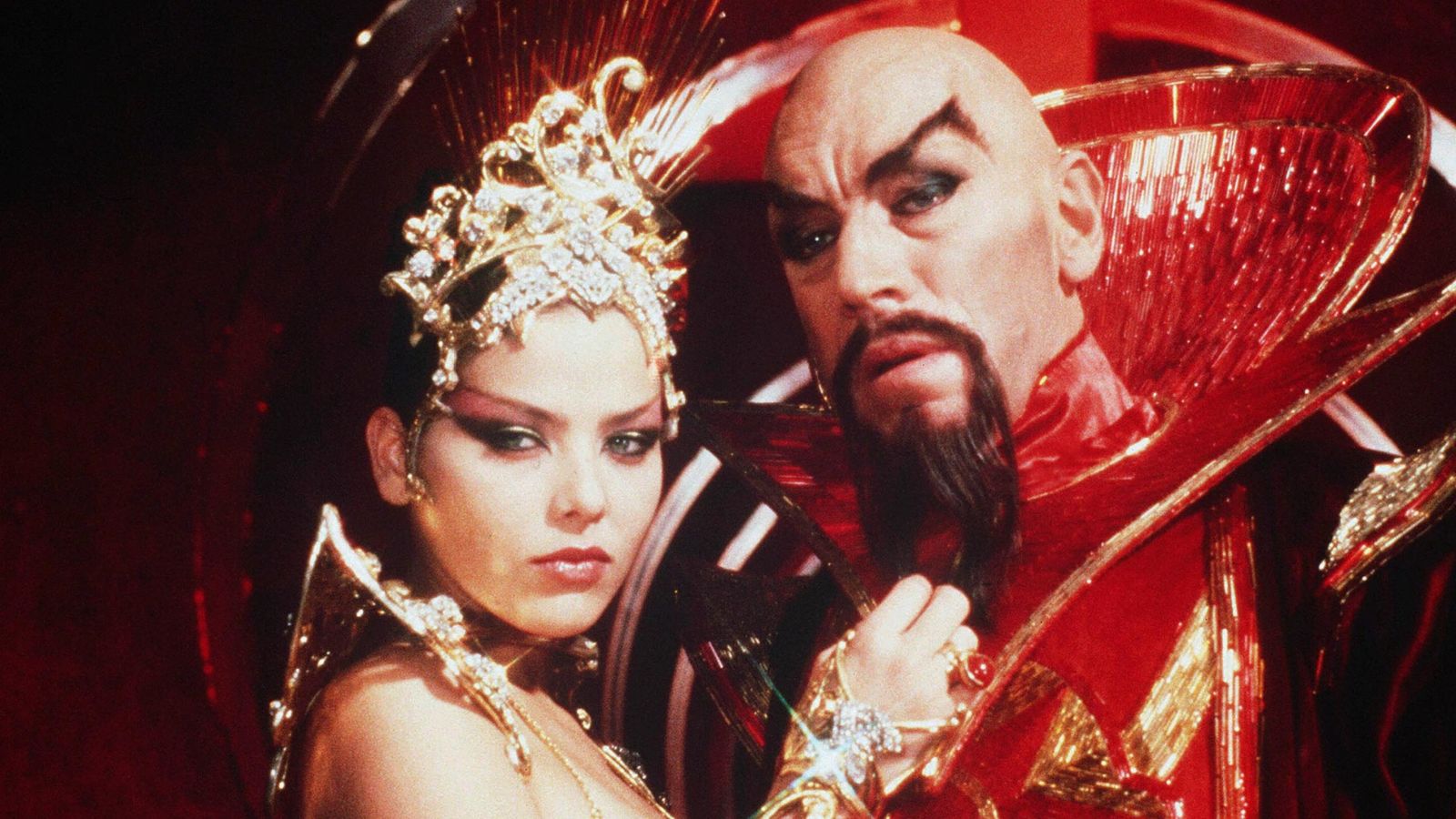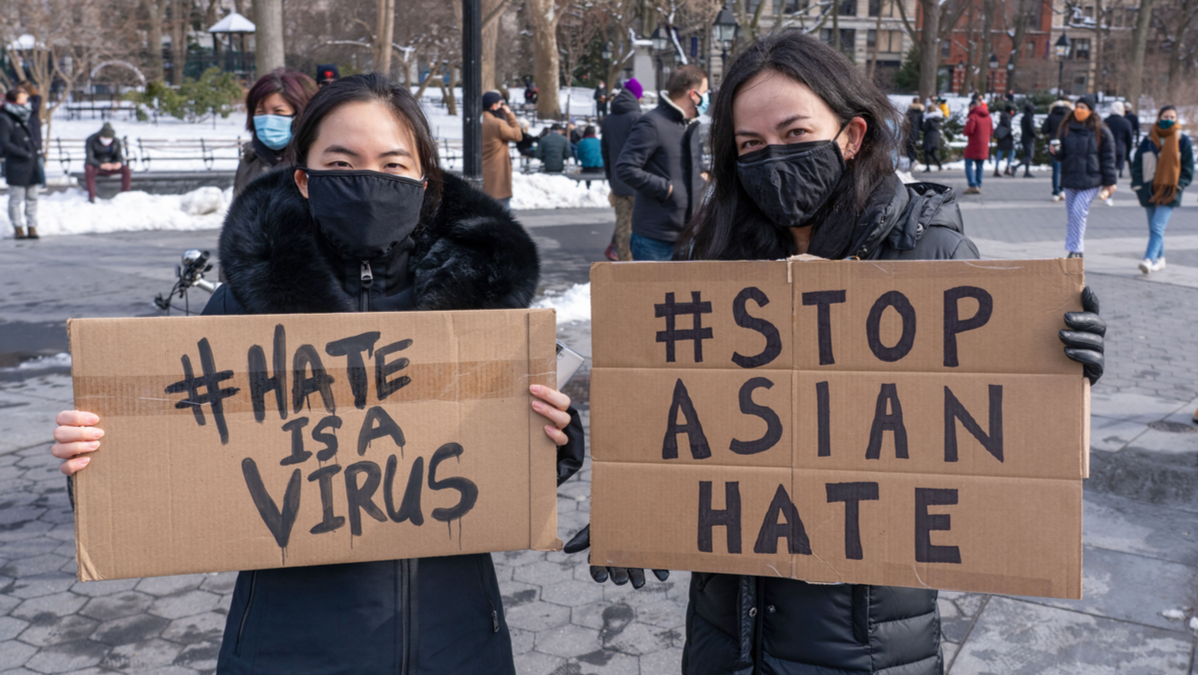Gizmo: The Model Minority
gremlin
Gremlins is not often thought of as a Christmas movie, even though it takes place in a snowy small town that could double as the set of It’s a Wonderful Life, and the entire plot revolves around the unintended consequences of holiday gift-giving. It is funny to think back and remember that unscrupulous advertisers led the public to believe that Gremlins was a family picture about cute, fuzzy creatures. After parents marched out of theaters with children traumatized by the blood-spattered, if cartoonish horror-film aspects of the film, the ensuing controversy led to the creation of the first-ever PG-13 rating. (The old system skipped directly from PG to R.)
In Gremlins, then, we not only have one of the most popular examples of a Christmas film that dares to deviate from Christmas cliches; we also have a case study of a classic moral panic from the 1980s, the decade of satanic ritual abuse and razorblades in Halloween candy. Gremlins was one of the top films of 1984, along with venerable hits Beverly Hills Cop and Ghostbusters, and its box office far surpassed other Christmas films with a dark streak, like Bad Santa.
In the 1980s, a new breed of filmmakers (Steven Spielberg, Robert Zemeckis, John Landis) raided a storehouse of genres and cliches to give a grateful public popcorn entertainment of the first order. In the previous decade, a film industry long afflicted by the rise of television let a handful of eccentrics like Francis Ford Coppola and Robert Altman make dark, difficult films that eschewed happy endings and challenged American mores, but Steven Spielberg and George Lucas soon paved the way for a new era of crowd-pleasing kitsch by reviving monster movies (Jaws), Westerns (Star Wars), and adventure films (Raiders of the Lost Ark). Legend has it that filmmakers like Spielberg learned the vocabulary of genre film by watching reruns of old Hollywood schlock on TV as kids. This experience led them to regurgitate the tales of vampires, zombies and adventurers on the big screen. (Interestingly enough, more or less the same story has been told of Quentin Tarantino and his ilk in the 1990s, as a generation who stitched together their supposedly postmodern pastiche from the videos they watched in the 1970s and 1980s. When have artists not been reconstituting the last generation’s culture in the new?)
I, for one, welcome our Asian overlords
But Gremlins is more than a genre redo like Raiders of the Lost Ark or forerunner of postmodern kitsch. It is also a film that captures some genuine anxieties about race, immigration and globalization that appear in more recognizable form in other Eighties hits, like Gung Ho (1986). It is also keyed into a longing for innocence that is characteristic of the Reagan Era, a period of venality and class war and family values and Fifties nostalgia. Critic Noël Carroll sees a narrative arc in Gremlins and other Eighties films that tracks the experience of adolescence:
This kind of plot seems to appeal to young audiences because it is a kind of parable about growing up. It highlights the discovery of hidden knowledge, while also dramatizing a moment when adults are finally forced to listen seriously to the young. And many horror films stress biological deformity and Otherness, thus broaching adolescent anxieties about the body.
Gremlins mostly follows this storyline, most baldly when the hero, Billy, has to explain to the local authorities that the mischievous critters are real. (“I know it sounds crazy!”) And the gremlins certainly express fears about changing bodies and reproduction in gooey, graphic detail.
But the small, furry/reptilian little monsters must symbolize something else. As Carroll notes, Eighties films were also filled with zombies, vampires, aliens, and so forth. Each classic monster exemplifies one abiding fear or another. Crudely speaking, zombies symbolize mindless conformity and a ravenous mass consumerism; vampires, doubts about sexual boundaries. Some critics have alleged that gremlins portray a grotesque caricature of African Americans, which would not be surprising in the viciously racist era of the “welfare queen” and the crack epidemic, which was beginning to capture the nation’s attention in 1984. In Ceramic Uncles and Celluloid Mammies, Patricia Turner has criticized the film for imbuing the riotous ne’er-do-wells with the equivalent of blackface, as they feast on fried chicken and breakdance while wreaking havoc.
Turner’s theory is plausible enough—in a racist society, there’s a good chance that any tale of an impish, troublemaking Other may very well stand in for a racial minority in the minds of filmmakers and viewers. Coming at a time when politicians increasingly demonized the black poor as violent and irresponsible, the gremlins exhibited familiar qualities: poor impulse control, insatiable appetites, loud and reckless behavior. They are pure id, driven by desires not unlike the desperate drug addict, whose only pursuit is more pleasure.
However, one salient difference distinguishes the gremlins from the disparaged African American deviant: their foreign (indeed, Asian) origin. Mr. Peltzer buys the mogwai as a pet for his son Billy on a business trip. The film opens in Chinatown, where the traveling inventor and salesman purchases the peculiar species from a mysterious old Chinese man of the most stereotypical kind. The pet comes with several odd rules: do not get the animal wet (do not even give it water to drink), and never feed it after midnight. What will happen if one does of any of these things is not clear, though the instructions carry the implicit logic of the fairy tale, which telegraphs to viewers that the forbidden thing will, of course, be done later in the story.
Do you promise to not feed it and not walk it?
Despite its foreignness, the little creature (named “Gizmo”) appears good-natured. An animal that cannot even come into contact with water makes him even stranger, but his cuteness quickly wins the family over. When things do go wrong, though, Gizmo becomes the unwilling vehicle of uncontrollable forces: a splash of water causes him to enter a spasm of crazed reproduction, with little hairball babies sprouting out of his back. Even more disturbing is the metamorphosis that the little mogwais undergo when fed after midnight—they turn into slimy, scaly monsters, marked by gluttony and a desire to harm and torment the local townspeople. Liquid may connote sexuality, since Gizmo’s exposure to water results in his helpless virgin birth.
However innocent or well-meaning Gizmo may be, he still embodies a racist stereotype: that of the immigrant minority coming to this country and having too many kids, immortalized in liberal form by The Simpsons’ Apu and his eight children. The gremlins are a foreign menace that invades the Norman Rockwell-esque town and wantonly consumes its resources. They are also from Asia, home of the Japanese industrial juggernaut that threatened to sap American strength in films such as Gung Ho (1986) and Back to the Future II (1989). The gremlins foolishly try to imitate the ways of white, middle-class America (such as caroling) in their own inescapably demented fashion, like immigrants who are ridiculed for failing to adopt American mannerisms or speak English perfectly. More to the point, Japan and other Asian countries were often accused of copying/stealing American art, science, and technology to get ahead in the race for economic advantage during this period. (For example, in the early 1980s Jack Valenti, the notorious Hollywood spokesman, decried Sony’s videocassette recorder as a violent foreign parasite that would destroy American industry by allowing consumers to copy movies: “We are going to bleed and bleed and hemorrhage, unless this Congress at least protects one industry that is able to retrieve a surplus balance of trade and whose total future depends on its protection from the savagery and the ravages of this machine. … I say to you that the VCR is to the American film producer and the American public as the Boston strangler is to the woman home alone.”)













